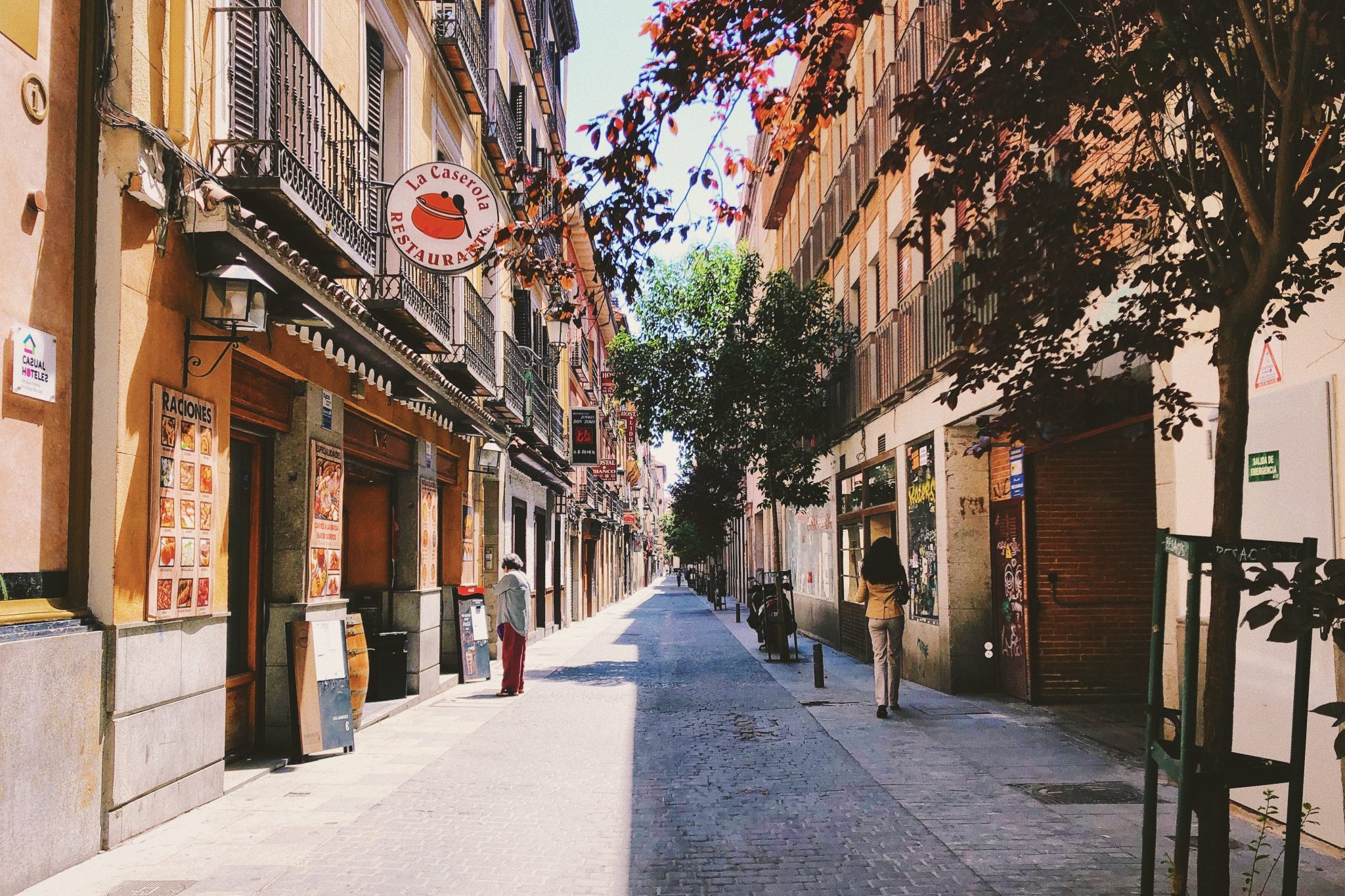Skift Take
From low-key stays to new-gen hostels and neighborhood apartment set-ups, the Spanish capital is moving its hospitality scene to luxury addresses.
As pandemic travel restrictions began to ease in the spring of 2021, foreign tourists returning to Madrid discovered the city’s downtown had undergone a makeover.
An area better known for its budget hostels, tacky souvenir shops and car-choked roads now had wider pavements, pedestrianized zones, and streets that Madrid’s town hall says are safer and cleaner.
The facelift was part of the city’s plan to attract a string of five-star hotels as it pushes for a piece of the luxury tourism sector until now dominated in Europe by Paris, London and Milan.
Deluxe hotels are cropping up all over the center of Spain’s capital. Four Seasons Hotels opened a property near the central Puerta del Sol after the refurbishment of seven buildings including a former bank branch. The 1,500 square meter complex includes a shopping mall for luxury brands including Dior and Hermes.
Marriott International reopened the Santo Mauro Palace after renovation work during the pandemic and in June began to revamp the Westin Palace, adding 400 rooms. The nearby Ritz has recently been upgraded to the luxury Mandarin Oriental Ritz brand. Universal Music selected Madrid for the launch of its first five-star hotel.
“We chose Madrid because it has been underrepresented in the luxury segment for years,” said Richard Brekelmans, Marriott’s vice president for Southern Europe, citing the city’s abundance of art museums, theatres and restaurants as its main draw.
Madrid hopes to avoid the saturation seen in Barcelona or the Balearic islands, while betting that the luxury sector helps it generate the same income. Barcelona, by contrast, is restricting the building or expansion of hotels in its center to address unmanageable volumes of visitors.
Madrid will have more than 2,700 luxury hotel rooms by the end of 2023, up 50 percent from a decade ago, according to a report by commercial real estate services company JLL.
The city has 33 new hotels in the pipeline, half of them in the upscale segment, compared with 13 projects in Barcelona, consultancy firm Colliers said in another report. Madrid’s hotel investment came to a record 802 million euros in 2022, three times that of Barcelona, it found.
“We saw a great potential…in the United States, Madrid was previously unknown,” said Carlos Erburu, general director of the first Thompson hotel in Europe for Hyatt Hotels Corp, which opened in Madrid in late 2022.
“The commitment the authorities in Madrid have shown for hotels versus that of Barcelona is much greater,” Erburu added.
Rising Room Rates
The arrival of luxury hotels has marked a new peak in room rates.
Antonio Catalan, a partner at the Santo Mauro Palace, said the most expensive room rates there have risen from around 400 euros ($437) a night before the pandemic to 1,200 euros a night now. Occupancy has remained stable even as room rates rise, half a dozen hotel managers told Reuters.
“We still have rates at half of Paris and below Rome,” Catalan added. Three luxury hotel managers said they expect prices can increase more in the coming years.
Restaurant chains are following in their wake.
Robuchon International, holder of 15 Michelin stars across its venues, opened a three-floor restaurant in Madrid last year.
Alejandro Pitashny, an Argentine investor, has opened four restaurants in the Spanish capital since 2018. He has also invested in luxury short-rental apartments and is seeking to buy a hotel this year in the city.
“I am bullish on Madrid’s tourism industry,” he said.
Wealthy Americans are joining Latin Americans in including Madrid as part of their European travels, managers said. The number of U.S. visitors to Spain increased 25 percent in April compared with the same month in 2019, official data show. Some managers are also noticing an increase in the number of Asian visitors.
The bet on luxury is reflected in expenditure. Foreign tourists in Madrid spent 336 euros per day in April — twice the national average.
“We’re seeking to capture the highest-spending international tourists,” said Madrid’s Tourism Director, Luis Martin.
Airlines are also catching on. Spain’s Iberia expanded its flights to the U.S. and Latin America this summer by 15 percent compared with 2019, while Air China has just increased flights to Madrid from one to four a week. China Eastern will have five flights per week to Madrid from this month.
All of this means more jobs. Employment in Madrid’s tourism sector has grown by 15 percent since 2019, compared with 5.4 percent nationally. Most of that growth is in four- and five-star hotels, said Jose Maria Martinez of trade union CCOO.
“The Spanish tourism sector has always tried to compete with other destinations on low prices,” he said.
“Some companies have worked out that it is better to bet on more profitable formats.”
(Reporting by Corina Pons; Additional reporting by Belen Carreño; Writing by Charlie Devereux; Editing by Hugh Lawson)
This article was written by Corina Pons from Reuters and was legally licensed through the Industry Dive Content Marketplace. Please direct all licensing questions to [email protected].

Have a confidential tip for Skift? Get in touch
Tags: barcelona, four seasons, hotels, jll, madrid, Marriott International
Photo credit: Deluxe hotels are cropping up all over the center of Spain's capital. Alex Vasey / Unsplash
